Welcome to the first session of ‘Running rings around yourself’….
which asks you to draw rings – any size, any medium – but must be ‘free hand’ and not drawn around a template.
To be able to draw a good ring and not a wobbly one, you need to be standing and you need to work from your shoulder and not elbow or wrist.
Your hand should be free to swing as a weight on the end of a plumb line or the ball in a game of ‘swing ball’. You’ll notice in both these analogies, that the circular swing goes round several times. Let your arm do the same thing, not so much a spiral, but round and round on the same journey to smooth out any ‘blips’. I realise I was much better at the end of this exercise than at the beginning, so keep at it.
Draw ellipses as well (squashed-in rings) but keep up the smooth action from your elbow.and note that ellipses do NOT have points at each end – the line is rounded and continuous. See the third image below.
Use a page to draw lots of trial rings until you ‘get into the swing’ of it.
When ready, explore some of these possibilities and try out different pattern formations within your page each time.
- Make rings using combinations of drawing media – pens, crayons, pastels, graphite stick, biro.
- Make overlapping, linked chains of rings.
- Make graded ellipses (I should have added a ‘perfect’ ring to the top of this row but ran out of page space in #3.
- Use your media to make the rings look as if they are coming forwards or going backwards by grading each set of rings from a soft ring made by pressing lightly with a pencil or crayon on the outside ring to a strong, bold crayon, pressed hard on the inside as here.
Of course you can combine any of these ideas on one page as further developments, so try them out for yourself.
Discover which of your drawing media will react to water. Paint clean water over a page (this will make it ripple if you have thin paper, but don’t worry)
Draw rings with different media and let it work (or not work). Accept any wobbles as part of the character of this method. You will need to let each page dry before turning over.
You will then know which media to use in the following ideas.
Above - Draw a pattern of rings onto a dry surface and then use plain water to paint onto it. Notice the reverse side of this page in the second image! (Waiting to be worked into next week!)
Above - Outside of rings drawn onto dry paper. Water painted onto each one and further rings of colour added inside each one. Notice the reverse side in the second image – which was too tempting not to work into when I turned over!
Above - Paint rings with clean water onto page (left) and before it dries, add coloured rings (right).
A happy accident - before I discovered that my sketchbook pages were rather thin, these rings acquired some of the ‘wet’ colour from the next page.
It’s fun to look out for these and take advantage of them.

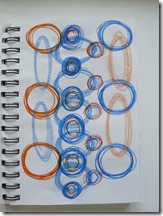
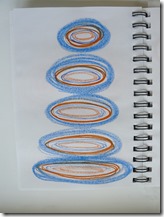
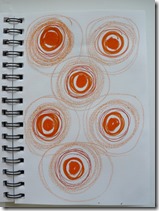
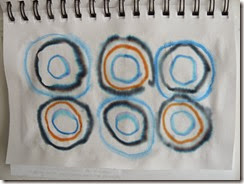

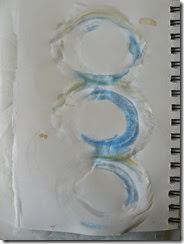
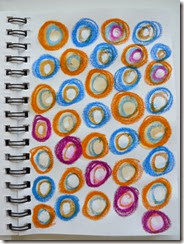
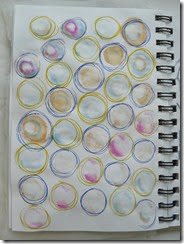
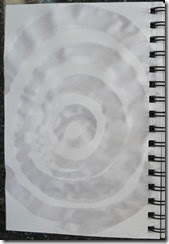
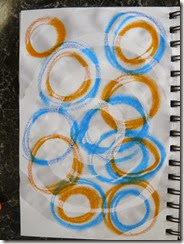
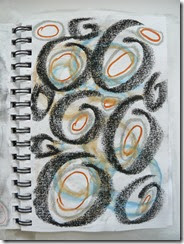
I can see stitches around and in these circles already! Thanks for the lesson!
ReplyDelete